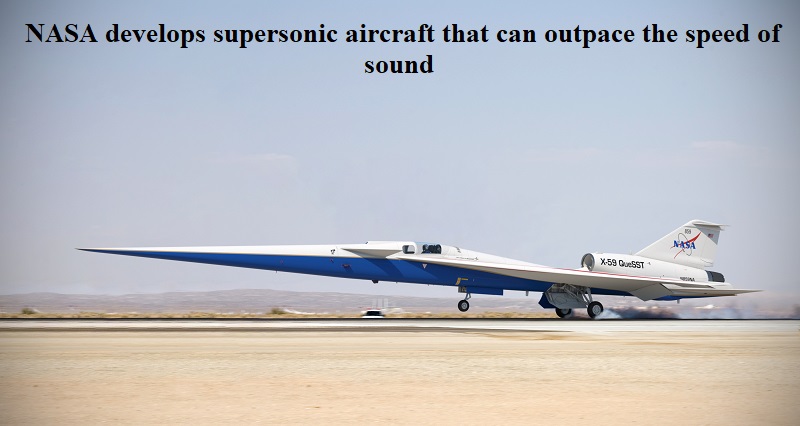
NASA is in the process of creating a supersonic aircraft that will surpass the speed of sound, achieving nearly twice the velocity of the Concorde, a supersonic airliner renowned for flying faster than sound.
The envisioned supersonic planes could potentially enable flights from New York to London in under an hour and a half.
Currently, journeys to New York require around eight to nine hours, but NASA’s innovation promises drastically reduced travel times.
This innovation could potentially result in travel times up to four times faster than the present duration for New York City to London flights.
In theory, this supersonic aircraft could attain speeds ranging from 1,535 to 3,045 miles per hour at sea level, a significant advancement from the conventional commercial planes’ speed of around 600 mph.
Indeed.
Prominent aviation corporations such as Boeing, Rolls-Royce, and GE Aerospace are collaborating with NASA to design conceptual aircraft that are not confined by proprietary limitations.
These new aircraft models are projected to reach speeds between Mach 2 and Mach 4, exceeding the current planes that function at roughly 80 percent of the speed of sound.
The Concorde, notable for its top cruising speed of 1,354 mph or Mach 2.04, once completed its swiftest transatlantic journey in 2 hours, 52 minutes, and 59 seconds on February 7, 1996, traveling from New York to London.
NASA’s investigations indicate a demand for high-velocity flights, although bans on supersonic flight over land in the United States and other nations would restrict these aircraft to overwater routes, including popular North Atlantic and Pacific trajectories.
To overcome this challenge, NASA’s Quesst mission is developing the X-59 quiet supersonic aircraft, aiming to establish supersonic land travel.
The latest analyses intend to modernize technological pathways and recognize supplementary research prerequisites for a wider array of elevated speeds.
NASA’s Advanced Air Vehicles Program (AAVP) is proceeding to the subsequent phase of high-speed travel exploration, recently awarding two 12-month contracts to firms for design and roadmap development.
These roadmaps will delve into aviation possibilities, outline risks and challenges, and pinpoint essential technologies for realizing travel at Mach 2 and beyond.

Post Your Comments